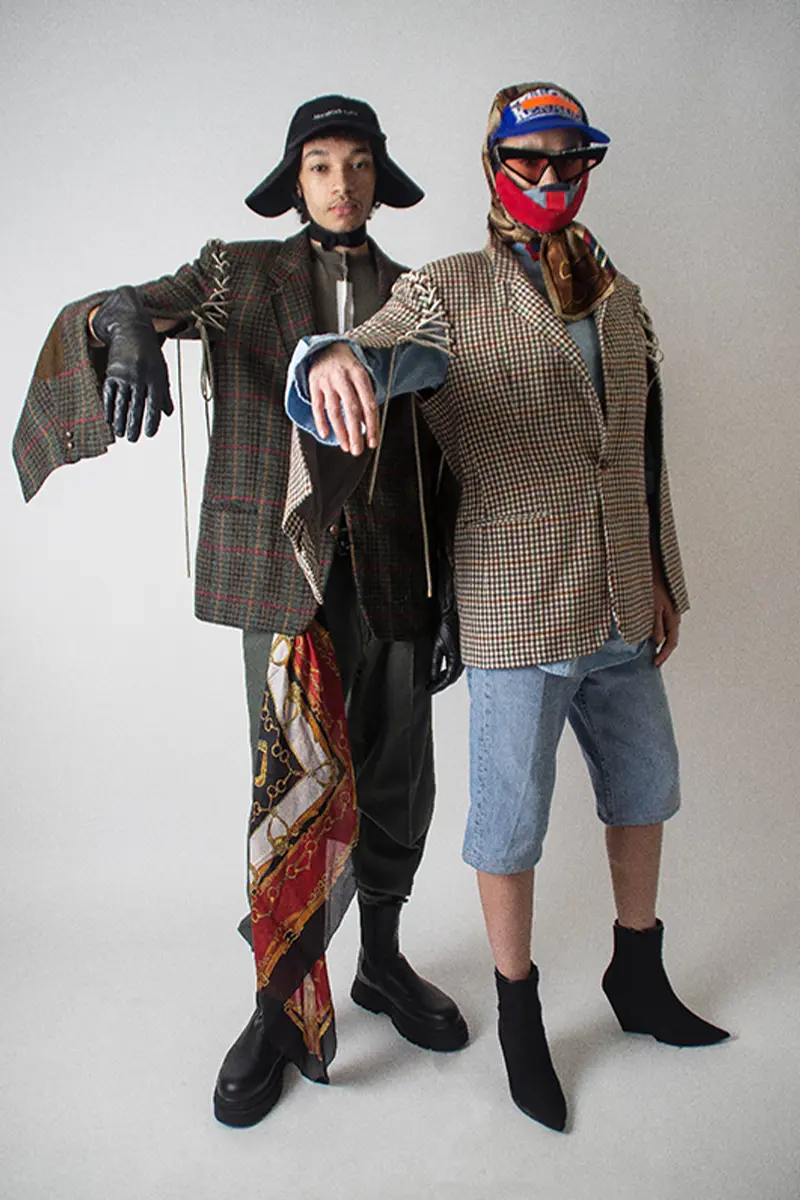Sourcing deadstock, re-designing classics and the future of vintage. A discussion on the circular model
The rise of circular fashion
Before the environmental consciousness of the fashion industry became prevalent, it is well known that many luxury fashion brands would destroy unsold stock and unused fabric in a bid to protect the exclusivity of their label and products. Unsold clothing, perfumes and accessories would be burned or shredded to make space to produce new designs. Brands would sustain that the energy produced by the burning unsold products would be captured and used, making the process less environmentally harmful.
In a bid to become more sustainable, brands have started either donating or selling their deadstock fabric to be used by smaller brands or students. For example, a project between Burberry and the British Fashion Council, called ReBurberry Fabric Initiative, will donate left over fabric to fashion students to use for their courses. LVHM is launching Nona Source, an online market platform which will sell its deadstock high end fabrics.
The mitigation of the amount of clothing that ends up in landfills – circular fashion
The linear production of clothing has been challenged by the circular economy. Circular fashion focuses on the life cycle of garments and assures that sustainability is instilled in every aspect of production. This starts from the sourcing stage, where sustainable materials and fabrics are sought out to be used for production. Within circular fashion, clothes are made to last longer and mending and repairing is encouraged.
One aspect of circular fashion is the mitigation of the amount of clothing that ends up in landfills. Beyond renewable and biodegradable clothing, a tenet of circular clothing is giving garments second and even third lives. This is where re-sale and vintage play their role in extending the lifespan of clothing. The second-hand market is projected to reach US$ 64 billion by 2028, according to ThredUp’s 2019 Fashion Resale Market Report. With the increase in vintage and second-hand clothing, some designers are buying vintage pieces and re-designing them to make new garments.
Lampoon reporting: the Revival of deadstock fabric
Dutch-Vietnamese designer and creative director Xuan Thu Nguyen is the creative director of Paris re Made, an example of a brand which has been re-designing vintage luxury garments and creating pieces from luxury deadstock fabric since 2017. Nguyen’s aim is to re-tailor existing pieces into something new, while still respecting the integrity of the original design and label. Regarding the processes and circular model of Paris ReMade, the use of deadstock fabric avoids unused or unsold textiles being discarded. For clothing brands, this eliminates the process of sourcing or producing fabric, which cuts down on the environmental impact of their production process. Deadstock fabric also presents designers with the unique obstacle of limited ranges of clothing due to the restrictive nature of deadstock fabric. According to GLAMI.eco, remanufactured clothing can save around 13,000lbs of CO2 emissions a year. At Paris re Made, the brand sources bundles of vintage stock and dead-stock fabric from warehouses full of vintage or unworn luxury pieces, some of which are 30-40 years old. It is a process of updating a piece without changing its integral design and style.
Paris re Made leaves the original label on its pieces in homage to its original form. Although many upcycling brands cut luxury pieces for the fabric or certain details, Paris re Made avoids slicing certain classic pieces and merely adds to the existing design. The use of deadstock does have its limitations. Clothing can only be designed with the deadstock as its starting point, as fabric is not being produced for a collection. This caps the amount of clothing and the variety in sizes a fashion brands can produce. Paris re Made is seasonless. This is because of the logistics of sourcing vintage pieces, which has a ‘you take what you can get’ element to it; and because the brand does not want to be constrained by the limits and pressure of creating collections for each fashion season. This allows Nguyen flexibility within the brand and allows for multiple drops of clothing throughout the year.
Paris re Made on Circularity
There are disadvantages to the use of deadstock fabric. One of them being that fashion labels and mills can continue to overproduce fabric with the promise of deadstock being bought. Deadstock fabric is also not guaranteed to be sustainably sourced or made, which mitigates the sustainable benefits of deadstock fabric. In terms of circularity, the use and re-design of vintage pieces do change the linear trajectory of clothing. Fabric is being sold by fashion brands or mills to be further produced into clothing, looping the fabric back into the supply chain. In order to further the circularity of their garments, Paris reMade repairs garments as requested by clients despite not having an official repair service. The brand also receives requests from clients who have vintage clothing that they want the brand to redesign for them.
Paris re Made offers a closed loop of communication to mirror the circular fashion model. Not only are vintage redesign brands increasing in popularity, as is the vintage re-sell industry, but bigger brands are tapping into circular models like vintage clothing and clothing rental. Department store Selfridges has launched a rental service in partnership with womenswear rental platform, Hurr. This will allow customers to hire luxury clothing and accessories for a maximum of twenty days. Brands have also started their own vintage collections, or made use of platforms like Sellpy, a Swedish online second-hand shop that handles the collection, photographing, selling and shipping of people’s second-hand clothing. Brands are recognising that consumers are more aware of the sustainability of the clothing they buy and that mass producing clothing and sustainability initiatives, like second hand clothing, are no longer mutually exclusive.
Paris re Made
Is a sustainable upcycling high-end fashion label based and produced in Paris, France. It sources vintage garments and pieces by high-end luxury brands, as well as deadstock designer fabrics and turning them into re designed pieces




















